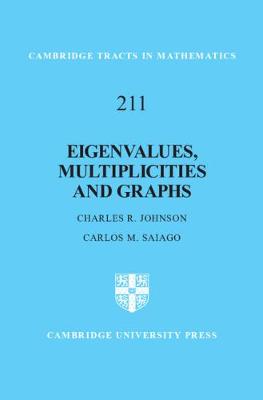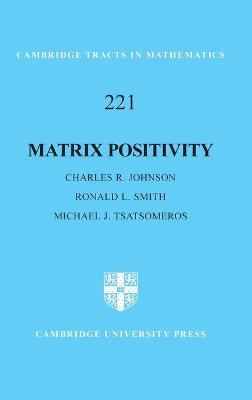Cambridge Tracts in Mathematics
2 total works
Eigenvalues, Multiplicities and Graphs
by Charles R. Johnson and Carlos M. Saiago
Published 9 February 2018
The arrangement of nonzero entries of a matrix, described by the graph of the matrix, limits the possible geometric multiplicities of the eigenvalues, which are far more limited by this information than algebraic multiplicities or the numerical values of the eigenvalues. This book gives a unified development of how the graph of a symmetric matrix influences the possible multiplicities of its eigenvalues. While the theory is richest in cases where the graph is a tree, work on eigenvalues, multiplicities and graphs has provided the opportunity to identify which ideas have analogs for non-trees, and those for which trees are essential. It gathers and organizes the fundamental ideas to allow students and researchers to easily access and investigate the many interesting questions in the subject.
Matrix Positivity
by Charles R. Johnson, Ronald L Smith, and Michael J. Tsatsomeros
Published 11 September 2020
Matrix positivity is a central topic in matrix theory: properties that generalize the notion of positivity to matrices arose from a large variety of applications, and many have also taken on notable theoretical significance, either because they are natural or unifying. This is the first book to provide a comprehensive and up-to-date reference of important material on matrix positivity classes, their properties, and their relations. The matrix classes emphasized in this book include the classes of semipositive matrices, P-matrices, inverse M-matrices, and copositive matrices. This self-contained reference will be useful to a large variety of mathematicians, engineers, and social scientists, as well as graduate students. The generalizations of positivity and the connections observed provide a unique perspective, along with theoretical insight into applications and future challenges. Direct applications can be found in data analysis, differential equations, mathematical programming, computational complexity, models of the economy, population biology, dynamical systems and control theory.

